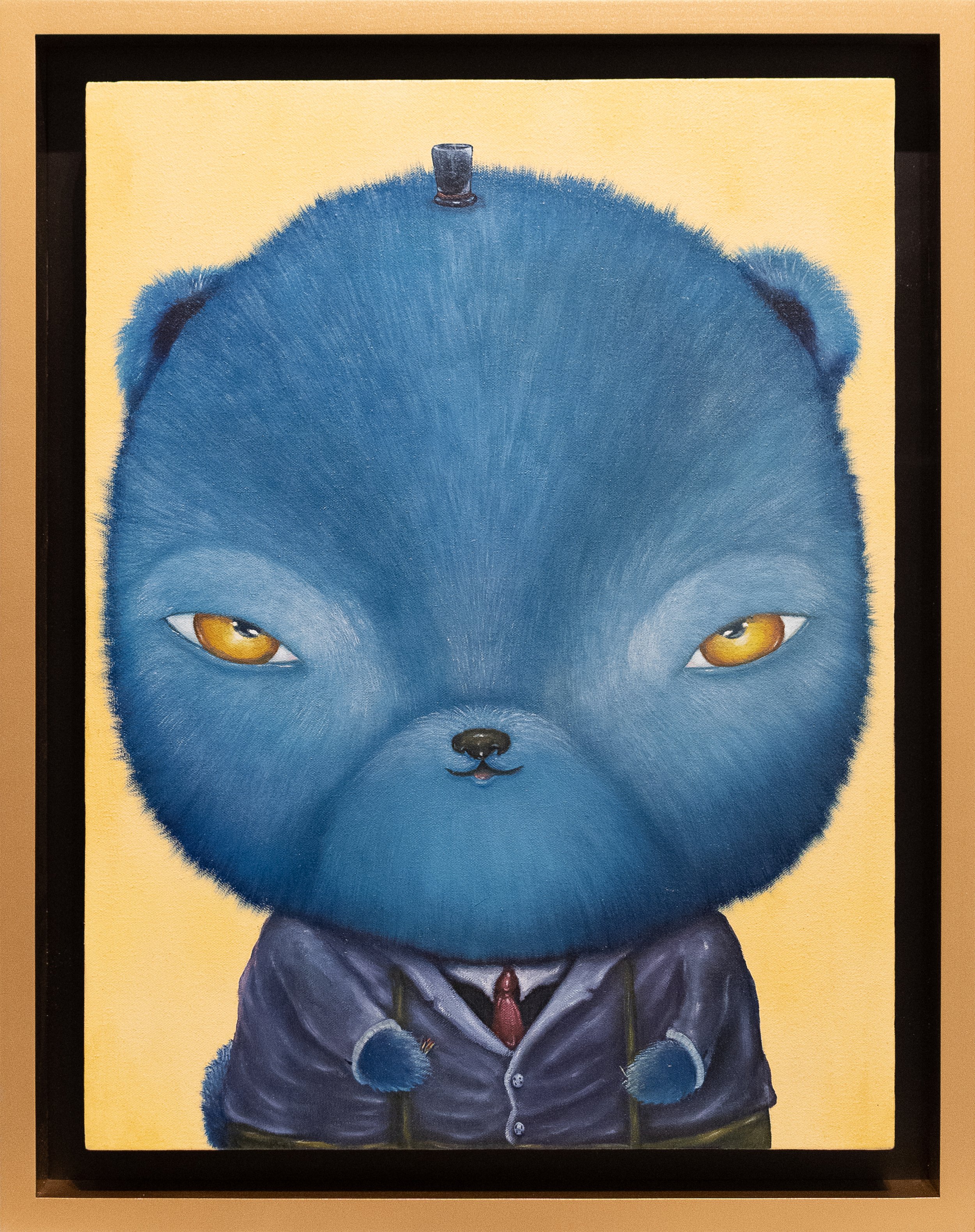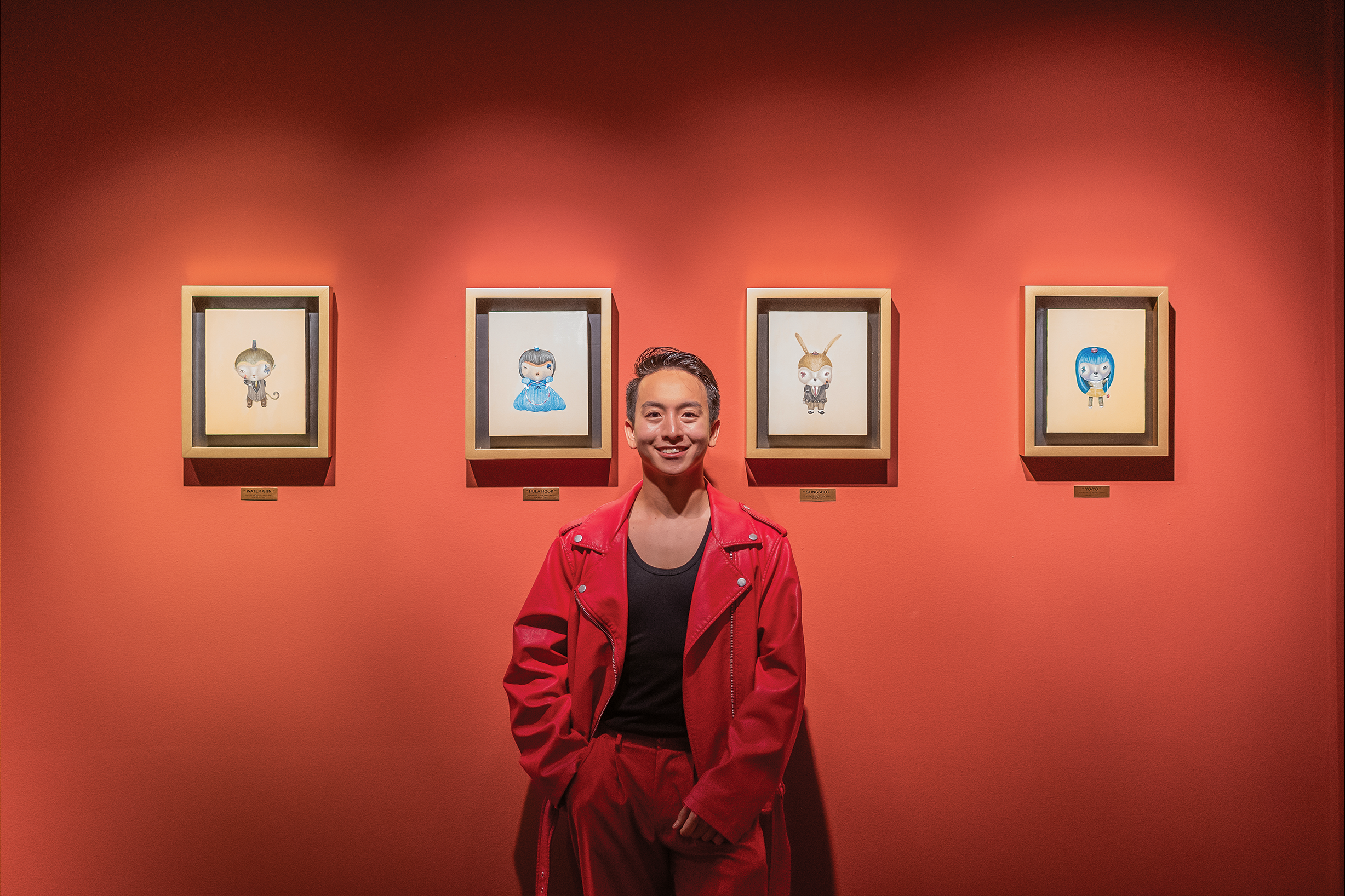To take the first step
Ian Inoy’s guide to navigating the arts scene as a newcomer.
Words Chesca Santiago
Images courtesy of Ian Inoy
December 22, 2023
Thirty minutes into the opening of his first-ever one-man show, Ian Inoy received news that the exhibition was already sold out. All nine pieces plus a waiting list that was getting longer by the hour—and the reception had not even started yet.
Having entered the arts scene only in 2019, Ian’s practice is still in its nascent stages. But for a former graphic designer-cum-arts professor entering a world of art galleries, collectors, and exhibitions for the first time, it’s safe to say that his journey has been nothing short of a quest through uncharted territory. The success of No Room for Sadness, held at Art Underground last October 2022, thus marks a defining point in his budding career in the visual arts.
For an emerging artist navigating the scene for the first time, Ian’s story is a resounding testament that newcomers can carve their own paths, too. I sat down with Ian to recount his successful foray and how his debut show is a culmination, albeit only the beginning, of a lifelong commitment to the arts.
Career shifts, style shifts
Becoming a painter was never among Ian’s original plans. A graduate of Fine Arts major in Advertising Arts, Ian initially dreamed of becoming a creative director. It was a trajectory that he attributes to his schooling, where he was conditioned to equate painting with realism. “When I was in college, the notion was that you have to practice realism to become an artist. But I’m not a realistic painter at all.” After university, he would find himself instead in the fields of graphic design, marketing, and teaching.
Yet it wouldn’t take long for the innate wanderer and globetrotter to stumble upon his turning point. It was through traveling, in particular a visit to an art gallery in Taiwan, that sparked his dream to witness his works inside a gallery as well. And while a sudden career shift would spell trouble for anyone who has already spent years in their current field, Ian embraced this trouble readily and patiently. With no connections and no backers to bring him in, Ian would make Excel sheets of exhibition openings around the metro, attending as many as he could in hopes of connecting with as many people in the community. “What I did was, for example, there’s a show in Quezon City, Makati, Alabang, BGC—even if it’s just one day, I will try to visit all of them.”
From the friendships that he formed with artists, collectors, and gallerists, he would eventually find himself joining in their shows. In 2019, Ian took part in his first-ever group exhibition. Yet this would only surface more concerns that the emerging artist must resolve: his search—in difficult progress—for his own art style, the lack of a solid network of collectors for his works, among others. It was a challenging setup that would go on for years: joining multiple group shows in a month only to fail to sell a single canvas. “The whole of 2020 and 2021, I didn’t have any sales. I wasn’t able to sell even one work. I wasn’t planning to give up, but it was still disheartening.”
During this time, Ian was working with abstract pieces made of upcycled materials such as plastics. Collecting waste items from his neighbors, it was a process that formed part of his advocacy and graduate studies on sustainability. But in 2022, Ian would develop asthma, rendering his process of melting and burning waste materials averse to his health. This was a period that made Ian feel astray, unable to pursue the art style and process that he had honed so far.
Towards pop surrealism
By a chance introduction to Art Underground, Ian found his solid footing in arts once again. Mentored by the gallery’s Managing Director, Nicholas Teotico, Ian experimented from one style to another. He played with medium, color, figuration, and lighting; added and omitted various elements to his canvases. Teotico would guide him every step of the way, helping Ian develop a style that best encapsulates his artistic identity.
It was an identity, as Ian would learn, that would draw its influences heavily from pop surrealism. The second turning point in his journey came with his discovery of this movement, triggering a fascination with its usual forms and colors and the way these affirm his personality. It was a style well-suited for him—anatomical principles and color palettes that allow an artist as lively as Ian to play with its motifs.
While Ian first encountered pop surrealism through his travels around Asia, his friendships with fellow pop surrealist artists in the Philippines would open his eyes to the movement’s possibilities. A visit to a friend’s studio in Cavite (Yerong Studio) helped him recast the style into his own—learning specific techniques such as how to render a figure’s skin supple and make its eyes glimmer. With a couple of tweaking (and a lot of help from his friends and mentor), Ian has finally nailed down his own style. In explaining the figures we see on his canvases, he shares: “I want my figures to be friendly and easy on the eyes. But looking closely, they reveal tiny details—they always hold a small object that anchors the concept of the show.”
No Room for Sadness
In No Room for Sadness, the animal creatures on Ian’s canvases held objects that were once dear to him as a child—pickup sticks, toy tops, toy guns, and other playthings. At its core, the exhibition was a journey back to our youth. From October 11-20, Ian turned Art Underground into a haven for our childhood memories, fostering a space where we can let go of pressure, stress, and all inhibitions that may burden us. “When we play, we’re not scared or attentive to what others say. I just wanted people to be stress-free in the show,” he explains.
Aside from the nine-piece canvas series of animal figures at play, Ian fulfilled his intentions with a performance and a participatory installation. He transformed the gallery walls, along with a mirror and a children’s study area, into an interactive installation that created a tender, nostalgic space for visitors. Still, more symbolic was his opening performance. Commencing the reception, the performance alluded to the challenges he has faced thus far as an artist. He affixed a frown on his mouth at first and subverted it towards the end to signify his perseverance against the odds. A perseverance that has brought him this far, to his first-ever solo show.
A journey through friendships
If there’s one thing to be learned from Ian’s story, it is that friendships are what makes one’s journey in the arts. From his mentor who guided him canvas after canvas; his fellow artists who generously shared support, skills, and opportunities; to his partner who remained by his side through career-shifts and beyond, Ian recognizes that he wouldn’t be here without the people who have walked this journey together with him.
“From the start, it’s really the people and connections that propel you. It’s not a one month thing. You wouldn’t excel alone. You need friends, you need supporters, you need people who will really guide you. As long as you have your own bubble inside your head, you wouldn’t understand what you lack and what else could be improved in your craft.”
So for the newcomer who finds themselves in Ian’s shoes? The advice has never been this certain. “Don’t be afraid that you don’t know anyone in the scene. Because you will make your own family here. You just have to take the first step.”






